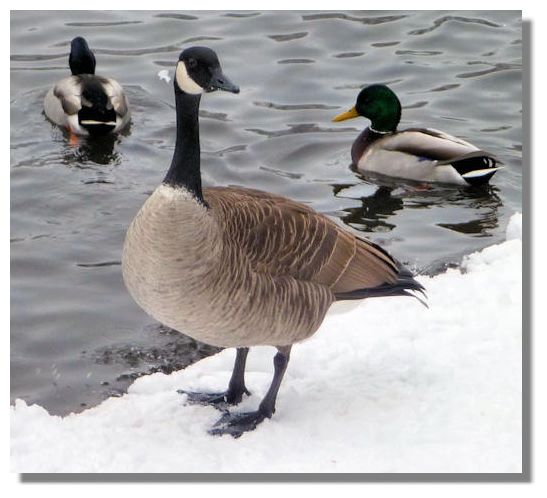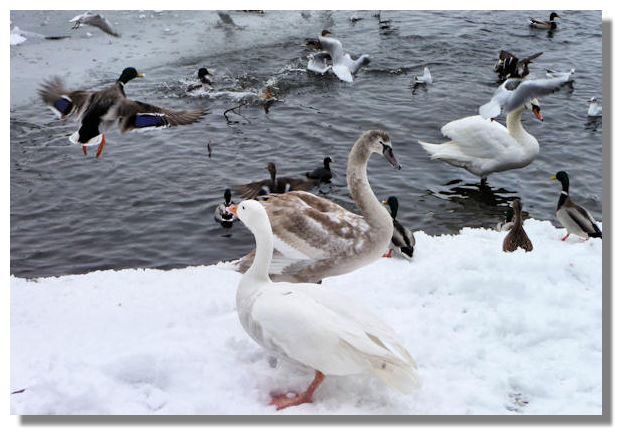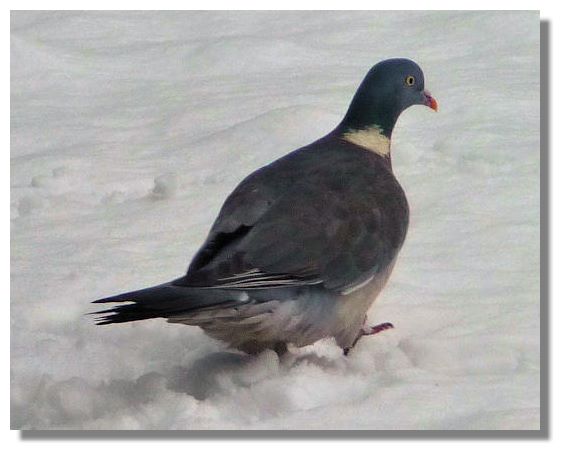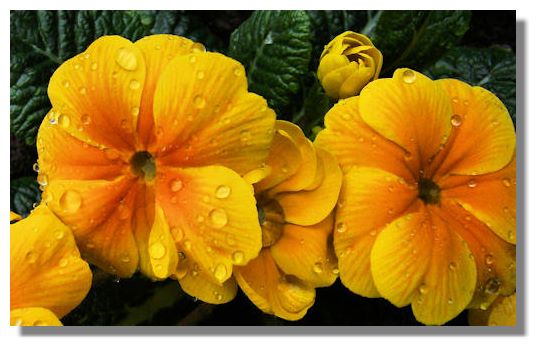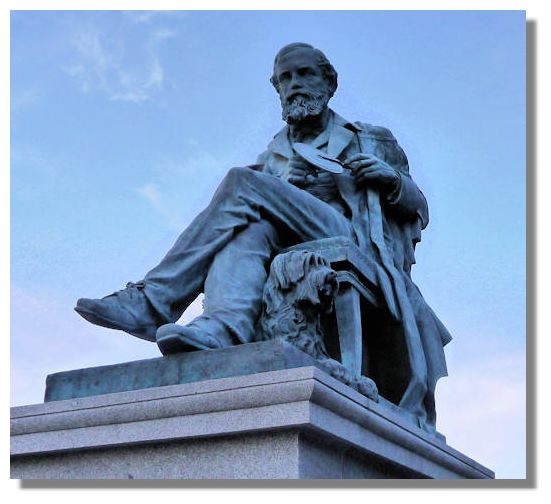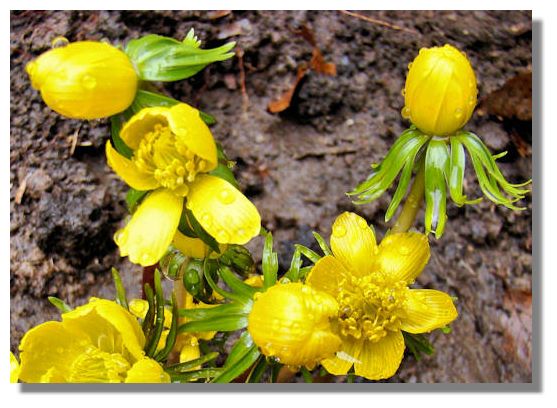The Rampant Scotland Newsletter includes a number of photographs which illustrate the weather and the seasons, plus the flora and fauna of the current week around Scotland. This separate "colour supplement" displays some more pictures, in a larger format. Here is this week's crop of Scottish views!
This Canada Goose, with its distinctive white "chinstrap" looks quite at home standing in the recent snow fall. Canada Geese in Britain often come from Scandinavia in the winter.
When I was about to take this picture of the waterbirds at Kilmardinny Loch in East Dunbartonshire. I hadn't noticed that an out of control dog was heading towards the birds. So when I pressed the shutter, the birds were flying in as panic in all directions - though mainly away from the dog. As a notice in a public park said "Your dog doesn't know any better - please show that you do!"
This rather disconsolate pigeon was trudging through the snow in my back garden. As pigeons are vegetarians, they would find it difficult to find seeds and other vegetable matter under the snow.
Polyanthus, part of the primula family, come in a huge variety of vibrant colours these days. They have the attractive feature of flowering not only in the spring but again in the autumn.
James Clerk Maxwell was born in Edinburgh in 1831. He established the laws of electrodynamics, propounding the his equations which established that electricity and magnetism are aspects of the same entity - He predicted the existence of radio waves in 1865, paving the way for radio, TV and electronics and so can be considered to be the father of electronics. His "Treatise on Electricity and Magnetism" containing the famous Maxwell equations was published in 1873. But it was only in 1887 when Heinrich Hertz discovered the existence of radio waves that his calculations became accepted. Nowadays, the Encyclopaedia Britannica describes his Treatise as "one of the most splendid monuments ever raised by the genius of one man."He proposed many other theories that weren't proved until long after his death. For instance he suggested that when a charged particle was accelerated, the radiation produced has the same velocity as that of light. Albert Einstein put on record (on the centenary of Maxwell's birth) that Maxwell's work had resulted in the most profound change in the conception of reality in physics, since the time of Isaac Newton. And Richard Feynman said that "there can be little doubt that the most significant event of the 19th century was the discovery of the laws of electrodynamics." Despite such praise from others in the field, he has been largely ignored in the city of his birth - until now - when a fine statue of Maxwell has been erected at the junction of St Andrew Square and George Street in the heart of Edinburgh's New Town.
Eranthis, more often known by its common name of winter flowering aconite, grow from tubers and can create a floral carpet under trees. the deeply dissected leaves form an attractive ruff round the bright yellow cup-shaped flowers. They can come into bloom as early as January if the conditions are right.If you want to look back at earlier editions of this Colour Supplement, there is an Index Page
